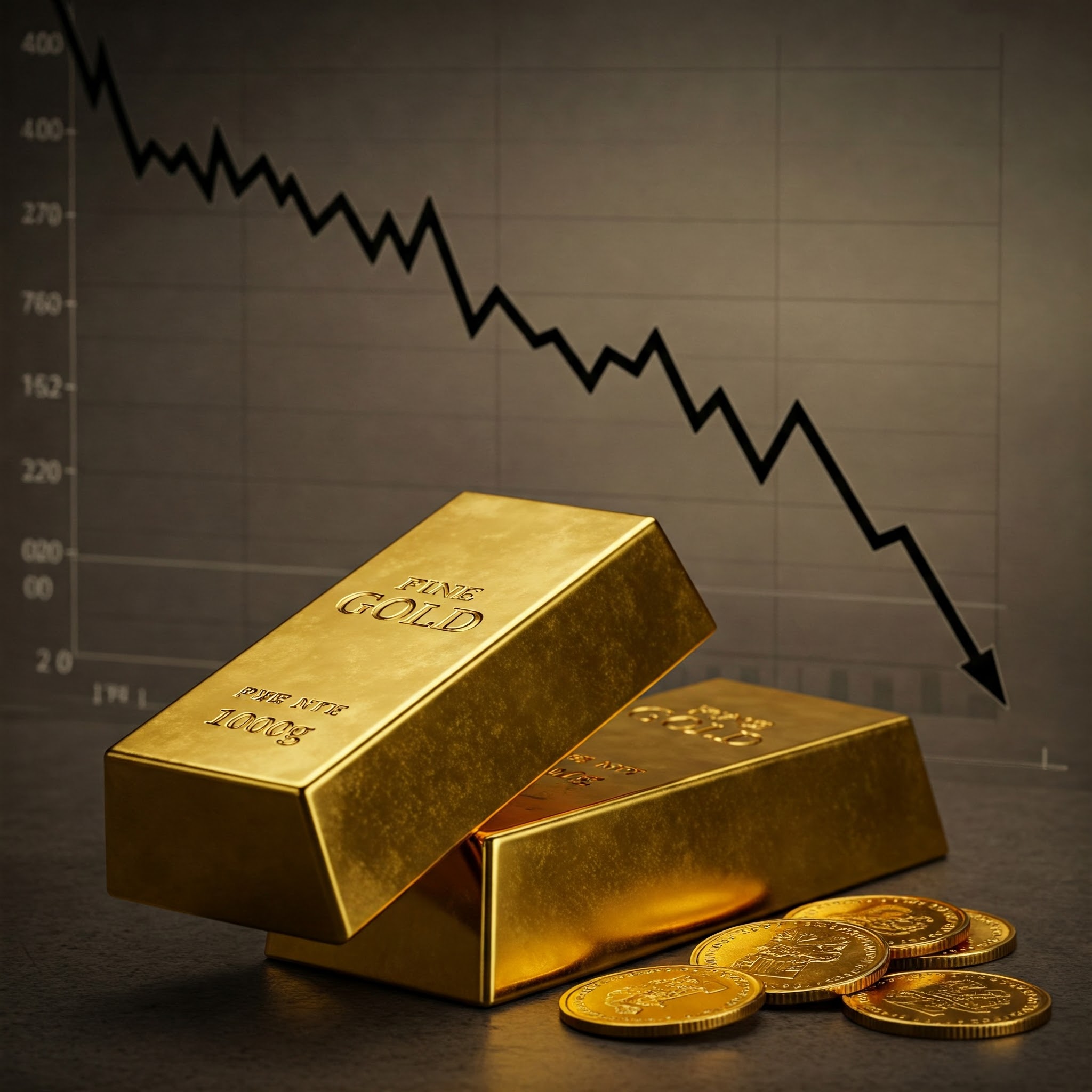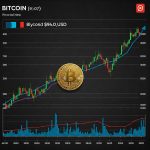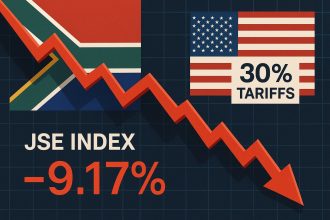I remember my grandmother’s words as if she said them yesterday: “Gold is the only safe investment.” She’d clutch her gold locket, a family heirloom, and talk about its enduring value. But if she were here today, even she might raise an eyebrow at the wild ride gold has taken in April 2025. From scaling a record high above $3,500 per ounce to retreating to around $3,330 by month’s end, gold has been anything but predictable. As someone who’s spent a decade chasing stories in the financial world, I can tell you this volatility is a tale worth telling—one that’s as much about human behavior as it is about market mechanics.
The Soaring Highs
Let’s rewind to April 22, 2025, when gold hit a glittering milestone: $3,499.88 per ounce, according to data from LiteFinance. This wasn’t just a number; it was a signal of the times. Global markets were reeling from President Trump’s tariff policies, which slapped hefty duties on imports, particularly from China. When the world feels like it’s teetering, investors often flock to gold, seeing it as a safe harbor in stormy economic seas. And that’s exactly what happened. The price surge was like watching a rocket blast off—thrilling, but you couldn’t help wondering how high it could go before gravity kicked in.
This wasn’t gold’s first brush with the spotlight in 2025. Earlier in the year, it had already climbed steadily, starting at $2,658.04 on January 2 and breaking the $3,000 mark by mid-March, as reported by Nasdaq. The April peak was the culmination of months of uncertainty, driven by trade tensions and a weakening U.S. dollar, which made gold even more appealing.
The Sudden Drop
But what goes up must, at least sometimes, come down. By April 29, 2025, gold was trading at $3,326.46, a drop of about 5% from its April 22 high. This retreat, while not a freefall, was enough to make investors pause. Some decided to cash in their chips, locking in profits after the rapid rise. Others, perhaps spooked by the same uncertainties that drove the rally, reassessed their positions.
This wasn’t the first dip of the month. Earlier in April, gold had already shown its moody side. After averaging around $3,140 per ounce, it plummeted to $2,976 within a week, only to bounce back to near $3,200 soon after, according to CBS News. That’s a swing of over $160 in just days—a reminder that even gold, the so-called stable asset, can keep you on edge. By April 29, the price had stabilized somewhat, but the memory of those earlier swings lingered, like the aftertaste of a strong coffee.
Why the Volatility?
So, what’s stirring up this turbulence in the gold market? It’s like a perfect storm of economic and human factors. At the core is the uncertainty around global trade policies. President Trump’s tariffs, including a 145% duty on Chinese goods, have sent shockwaves through markets, as noted by Yahoo Finance. These tariffs raise fears of inflation and currency devaluation, which typically boost gold’s appeal as a hedge. But they also threaten economic growth, prompting some investors to sell assets, including gold, to shore up cash.
Central bank policies are another piece of the puzzle. Gold thrives when interest rates are low, as it doesn’t yield interest like bonds or savings accounts. But with the Federal Reserve’s next moves unclear—some expect rate cuts in 2025, while others don’t—the market is jittery. Reuters reports that Goldman Sachs anticipates two 25-basis-point cuts in 2025, which could support gold prices, but nothing is certain.
Then there’s investor behavior. Rapid price spikes often trigger profit-taking, as some investors sell to capitalize on gains. This can be amplified by algorithmic trading systems, which react to price signals faster than any human could. Add in the broader market context—stock markets dipping, with the S&P 500 down 10.7% since early April, per Yahoo Finance—and you’ve got a recipe for volatility that keeps everyone guessing.
For those looking to navigate these choppy waters, trading platforms can offer a way to engage with the market. I recently heard about PocketOption, a platform that’s gaining attention for its user-friendly interface, allowing traders to explore assets like gold. It’s not a magic bullet—trading always comes with risks—but it’s a tool worth exploring for those curious about market opportunities. Just be sure to do your homework first.
What’s Next for Gold?
Predicting gold’s next move is like trying to forecast the weather in a hurricane. Analysts are split, but many remain bullish. LiteFinance suggests that most experts expect gold to hit $3,357 per ounce by the end of 2025, with optimistic forecasts reaching $3,720.38. More cautious voices, however, see a potential dip to $3,077.76. ANZ is even more bullish, forecasting $3,600 by year-end, citing recession risks and geopolitical tensions.
Longer term, gold’s trajectory will hinge on several factors:
- Global Economic Growth: A slowdown could bolster gold’s safe-haven status.
- Inflation Rates: Higher inflation often drives gold prices up.
- Geopolitical Stability: Ongoing trade wars or new conflicts could keep gold in demand.
- Central Bank Demand: Continued purchases by banks like China’s could support prices, as noted by Reuters.
But not everyone is optimistic. Some analysts, like those at Business Insider, warn that increased gold supply from mining could push prices down over the next few years, potentially erasing recent gains. It’s a reminder that gold, like any investment, isn’t a sure bet.
A Personal Reflection
Writing this story took me back to my early days as a journalist, covering local markets where traders would haggle over everything from spices to jewelry. Gold always held a special place—people trusted it, revered it. Today, that trust is still there, but it’s tested by the speed and scale of global markets. My grandmother might not recognize this world of algorithms and tariffs, but she’d probably still hold onto her locket, a quiet vote of confidence in gold’s enduring allure.
Conclusion
April 2025 has been a whirlwind for gold, a month that’s tested the nerves of investors and reminded us that even the most trusted assets can surprise. From its dizzying high of nearly $3,500 to its current perch around $3,330, gold remains a barometer of global economic health and investor sentiment. As we look ahead, staying informed—about trade policies, interest rates, and market trends—will be crucial for anyone with a stake in the gold market.
So, here’s my takeaway, inspired by my grandmother’s wisdom: Gold may not always be safe, but it’s never dull. Whether you’re an investor, a trader, or just someone curious about the world’s oldest currency, keep watching. The story of gold is far from over, and I’ll be here, coffee in hand, ready to share the next chapter. What do you think—will gold shine again, or is it in for more twists? Let me know in the comments.
Key Price Movements in April 2025
| Date | Gold Price (USD/oz) | Notes |
|---|---|---|
| Early April | ~$3,140 | Average price before sharp drop |
| Early April | $2,976 | Significant dip within a week |
| Early April | ~$3,200 | Quick recovery post-dip |
| April 22, 2025 | $3,499.88 | Record high for the month |
| April 28, 2025 | $3,343.25 | Slight decline from peak |
| April 29, 2025 | $3,326.46 | Current price, reflecting 5% drop from high |
Key Citations
- Gold Price Forecast for 2025 and Beyond
- Gold Price Update: Q1 2025 Review
- Gold Price Scenarios for April 2025
- Gold Hits Record High on April 11, 2025
- Gold Prices Rise Slightly on April 9, 2025
- Goldman Sachs Raises 2025 Gold Forecast
- ANZ Raises Gold Price Forecast to $3,600
- Gold Price Prediction: 38% Plunge Possible





